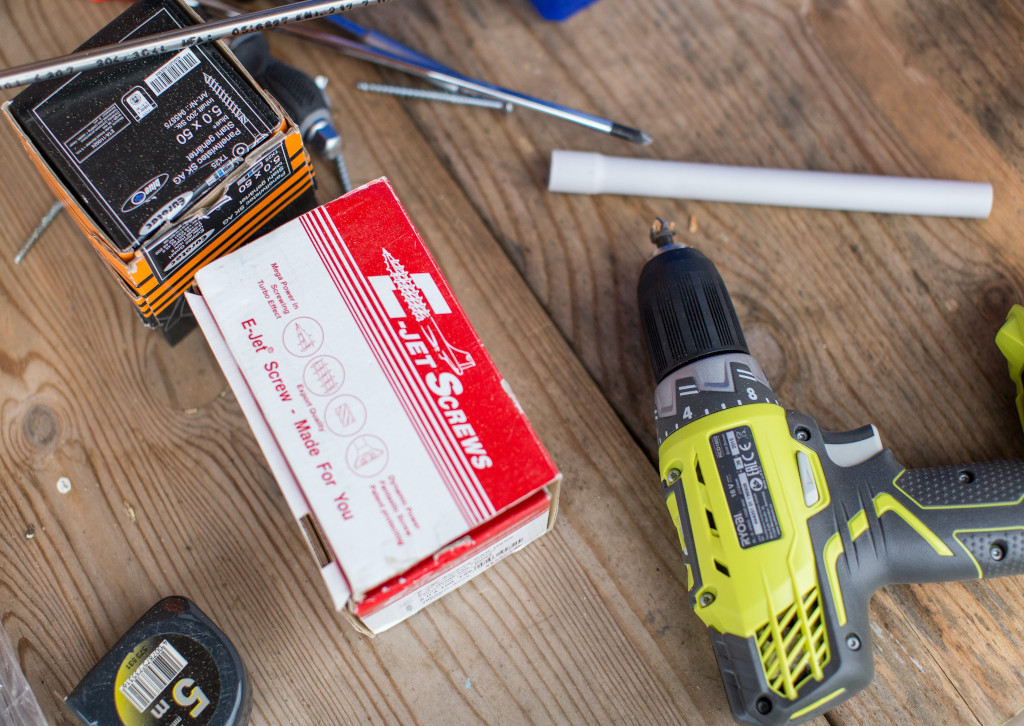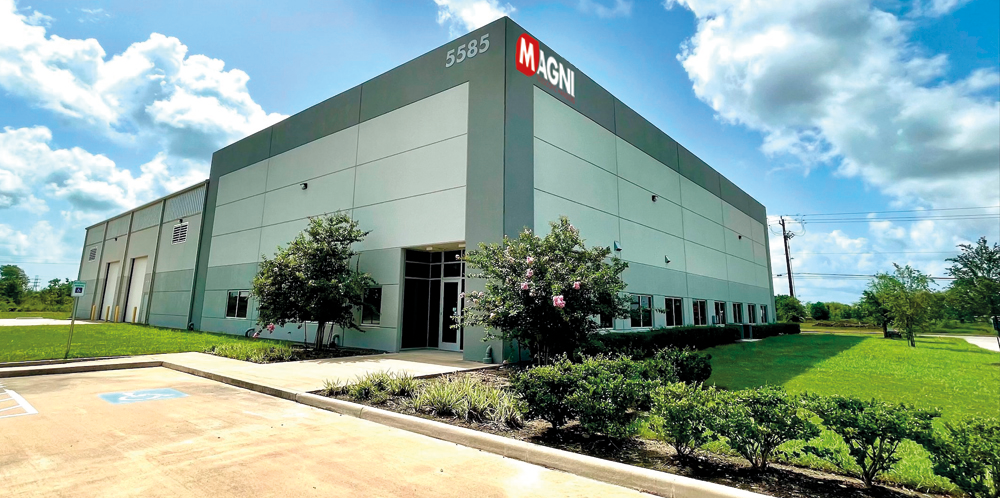Women in Construction: Planning Your Post-Pandemic Career Path

If you’re a woman working in the post-pandemic world, construction isn’t a bad place to be. While there is still a wage gap between men and women, it’s less than in other industries, with women earning 99.1% of what their male counterparts make.
The pandemic hasn’t slowed things down, either. A survey of 700 women in construction in March found that 58% said they’re working about the same compared with before the pandemic, while nearly one-third (32%) said they’re working more, and only 1 in 10 reported working fewer hours. Meanwhile, 71% said opportunities are on the increase, while 28% said they were about the same, leaving just 1% to report they were declining.
This leaves women in construction with a leg up on women in other fields, such as retail and hospitality, who have been struggling to retain their jobs during the pandemic. Instead of scrambling to get back to where they were pre-COVID, many women in construction are riding the crest of a wave.
Opportunities Abound
Restaurant, retail, and travel industry closures hit women in those industries hard. Employment in February was down by 383,000 jobs compared with the year-earlier total in retail alone. Leisure and hospitality employment job losses were even worse, at 3.9 million.
Although many jobs in the latter sector are opening back up as travel and tourism increase, many displaced workers will see a chance to shift gears and find opportunities await in construction, where a March estimate identified a need for 200,000 skilled craft professionals. And these positions pay well, upwards of $66,000 for a carpenter, for example. To compare, a general contractor can make an average salary of $70,000 to $95,000 a year.
There’s room for growth, too: Women make up just 10.3% of the construction workforce, which means there’s both a challenge and an opportunity.
Stereotypes Persist
Many women may not even consider construction because of stereotypes that have kept trade industries male-dominated for some time. Media representations from Bob the Builder to Wreck it Ralph to Tim Allen’s Home Improvement are geared toward male audiences.
Women, meanwhile, have been dismissed as no longer “needed” in construction jobs.This is similar to what happened after World War II ended, with “homemaker” conventions resurfacing to replace Rosie the Riveter.
It’s still assumed by many that construction is a male industry. But that’s simply a false assumption, and it’s limiting both women and the companies that could be benefiting from their talents.
Challenging those stereotypes will be important moving forward in order to take advantage of opportunities that are opening up. A more diverse workforce increases the labor pool. It also boosts productivity and provides a greater variety of perspectives to promote innovation and better decision-making.
Technologies & Trends Emerge
From drones and artificial intelligence to 3D printing and modeling, construction technology is becoming more relevant by the day. As the industry as a whole embraces data as a driving factor in decision-making, it is becoming more obvious that the soft skills women bring to the table as effective communicators and team players improve both productivity and safety. That means, for women in tech, the emphasis on working smarter could help them get their foot in the proverbial door.
Similarly, emerging trends in construction will expand opportunities for women in tech to break into adjacent industries. For example, new directives designed to address the climate crisis have resulted in an industry-wide push to achieve net-zero energy in both new construction and retrofitting. As a result, subcontractors in heating, plumbing, electrical, and alternative energy (to name a few) will be looking for sustainability experts to help them “go green” and stay relevant.
Entrepreneurship is Rewarded
Self-employed construction workers are a force to be reckoned with. More than 23% of U.S. construction workers were self-employed in 2018, compared to 10% of the broader workforce.
As of 2016, more than one-third of carpenters (33.6%) were self-employed, nearly 42% of floor layers were, along with 38% of construction managers and 41.3% of construction and maintenance painters.
That means there’s plenty of opportunity to be your own boss under the right conditions. Of course, that takes understanding things like the need for various kinds of insurance, such as workers’ compensation (if you have employees), property and liability, and general liability.
It also means having enough capital and credit to make a go of it. If you’re thinking of going into business yourself, now is the time to get your finances in order so you’ll be in a position to invest in yourself and your company. As an added bonus, taking steps to build your credit can save you up to $11,460 per year in interest rates and fees on loans and credit cards.
## Alternatives are Available
If you have taken time off from your career, either due to the pandemic or personal reasons, you have options. Returnships encourage professionals who’ve taken a break from the workforce to get back in the game.
These paid internships allow companies and potential employees to get a feel for each other and provide training that can help in the long run, whether you wind up with that particular company or not. Companies like CDM Smith and Caterpillar are among those that offer or have offered returnships, often with a focus on women.
Opportunities in construction will continue to expand, but as stereotypes persist, it’s important for women to remain confident in what they have to offer, because it’s significant. Women can provide a broader and more diverse pool of labor and ideas that will serve the construction industry well in the years to come.
Schedule a Demo
Jessica Larson is a married Midwestern mom and a solopreneur. She creates online courses for students, and has started and run several other businesses through the years. Her goals are to support her family while still actually spending time with them, to act as an entrepreneurial role model for her two daughters, and to share what she has learned through The Solopreneur Journal.
Did you miss our previous article…
https://www.tortowheaton.com/?p=351
How to Repaint Construction Equipment

It’s tedious, time-consuming and often overlooked. A fresh paint job may not be on the top of your preventive maintenance priority list, but it’s a critical step to extend the life of your equipment.
Paint protects your equipment from harsh weather conditions, prevents rust and corrosion, maximizes resale value and ensures a professional image.
The process is simple, but even with the right tools, it can be painstaking. You can buy a sandblaster, pressure washer and paint gun to do the job yourself or have your local dealer do the refurbishing for you.
Here is the process for painting construction equipment:
1. Prepare the surfaces
The quality of the final paint job is all in the preparation. To start, remove all decals from the machine. A heat gun or adhesive remover and a scraper will make this process easier.
Next, manually or mechanically sand the machine to remove the old paint. Pay special attention to areas that have rust or corrosion. Use a wire brush or grinding attachment on deep pockmarks. And as always, wear personal protective equipment to prevent skin lesions, eye contamination or particle inhalation.
Finally, replace or repair any dented or damaged external parts. If you can’t find replacement parts for older machines, you can also patch the area with a fiberglass filler or polyester resin.
2. Clean and degrease
After the surface is prepared, thoroughly clean the machine. Use a pressure washer, washing detergent and degreasing agent to remove all dirt and contaminants. Any dirt or grease residue left on the machine will ruin paint adhesion, so washing the machine more than once may be necessary.
Make sure to comply with local environmental regulations for contaminated wash water disposal. Allowing wash water to enter the surface and groundwater reservoirs can result in hefty fines, jail time and expensive cleanup.
3. Preparing equipment for painting
Once the machine is smooth, clean and dry, the surface is ready for masking. Fancy supplies aren’t necessary for this step; masking tape, masking paper, cardboard and plastic will do the trick.
Remove any accessories, such as mirrors or mud flaps, that should not be painted. Tape off any parts or accessories, like door handles or chrome, that cannot be removed. Cover tires and tracks and windows with paper or plastic.
If you are painting indoors, protect the floor and surfaces in your shop with cardboard and plastic draping – overspray will happen. A proper ventilation system is also critical to remove any harmful paint fumes.
If you are painting outdoors, keep temperature and wind conditions in mind. Paint will not dry properly in cold temperatures, and high winds will result in dust, uneven coverage and excess overspray.
4. Paint the machine
Spraying paint will guarantee even coverage and a smoother finish than rolling or brushing.
Professional painters recommend using an HVLP (high-volume/low-pressure) spray gun set between 25-30 psi. Ideally, the temperature should be around 68°F to ensure proper paint viscosity and adhesion.
Always hold the gun perpendicular to the surface of the equipment. Maintain a constant distance of about 6 to 8 inches away from what you are spraying. Start with the edges and hard-to-reach areas before painting the larger flat areas, moving the gun at a steady rate of travel.
Apply a primer to areas where bare steel or filler is exposed. Allow the primer to dry for 24 hours before applying the base coat. Apply the paint in thin, even layers. Wait 15 to 20 minutes or until the paint is tacky to the touch before applying the next coat. As a rule of thumb, use two to three coats of paint to ensure adequate coverage and durability.
Take proper precautions to ventilate the space and protect your eyes, nose, mouth and skin from dangerous fumes and chemicals. A full-body paint suit, respirator mask and gloves are essential.
5. Apply decals
Once the paint has dried for at least 24 hours, you can apply new decals to the machine.
The key to installing any decal and making it last is having a clean surface before you start. Wipe the area with rubbing alcohol to ensure proper adhesion. Position the decal on the machine with tape and mark the location where you intend to place it with a pencil. Carefully remove the backing and position the top corners on your pencil marks. Take a squeegee and slowly smooth the decal onto the machine, starting at the top and working your way to the bottom and edges, removing any air bubbles along the way.
Now that your machine looks close to new, you can earn top dollar for your trade-in or turn some heads on the next jobsite.
Did you miss our previous article…
https://www.tortowheaton.com/?p=348
Deere: Split With Hitachi Allows It to Flex Technology Muscle
What was behind the surprising Deere-Hitachi excavator split announced in August? What will this mean for Deere customers of both brands?
P
RuccoloJohn Deereerhaps a better question is what it won’t mean, says Domenic Ruccolo, speaking to Equipment World about the split. Ruccolo, a Deere veteran, is the company’s new senior vice president of sales, marketing and product support, global construction equipment. He also serves as chief sales officer for the Wirtgen Group.
“From a customer-support standpoint, I think the best way to put it is that there will be no change,” Ruccolo says. Irrespective of brand, Deere dealers will continue to support everything they have sold over the years “indefinitely,” he says.
“There’s no question that we had a very successful partnership with Hitachi throughout the Americas for more than 30 years,” Ruccolo says. But times have changed, and “it was the right time for both of us to make this change,” he says. “Where we are really going our separate ways is on the marketing and product support side.”
After Feb. 28th, Hitachi Construction Machinery Americas will take over distribution and sale of its excavators. Hitachi plans to manufacture all of its excavators in Japan and import them to the North and South American markets. All manufacturing plants in the joint venture will remain with Deere post-split. This includes its flagship manufacturing facility in Kernersville, North Carolina, as well as plants in Brazil and British Columbia.
That doesn’t mean all has ended between the two companies, however. “We’re going to continue to have a strong relationship with Hitachi for years to come through our continuing supply agreement with them,” Ruccolo says.
Hitachi plants in Japan, for instance, will still make its above 47-metric-ton models, the 670G and 870G, and its 190G wheeled excavator.
Technology centric
During the joint venture, Deere relied on Hitachi’s excavator technology, although Ruccolo points out that Deere has developed its own excavator models over the past 13 years that were sold in markets such as Australia, Southeast Asia and Russia. “The agreement gives us the flexibility to transition on a model-by-model basis to Deere technology,” Ruccolo says. “We’re really excited about the opportunity to control our own journey in excavators.”
Ruccolo also says this transition to Deere technology supports the company’s overall smart industrial strategy announced in 2020.
“Obviously when we have our own technology in excavators, it makes the deployment of them a lot easier for us,” he says. Deere can also apply technologies to excavators that it develops in other markets — notably agriculture and as the result of acquisitions such as autonomous driving start-up Bear Flag Robotics.
Dealer reaction
Ruccolo says the Hitachi split was not expected by dealers, “and there was a bit of a shock factor.”
Still, “there’s a lot of excitement and a lot of energy around what the future holds” on the dealer side, he says. “Once we had the opportunity to explain the transition and what the future holds I think generally dealers are quite excited about the future.”
He also says that by now Deere dealers are already well-versed in Deere’s new smart investment strategy. “Customers are going to experience the same continuity and exceptional support that comes in the form of reliable access to parts, solutions and service,” he says.
Three years down the road?
If plans proceed as envisioned, three years from now contractors will look back on an uninterrupted customer experience, Ruccolo says. “We intend to be there every step of the way from a support standpoint for our customers and dealers,” he comments.
And will the Kernersville plant start to produce excavators beyond its current 13- to 47-metric-ton segment? Ruccolo declined to comment.
The Deere-designed and manufactured excavator line, however, will be in full transition. “We want to accelerate the development of what we feel is industry-leading technology and machinery,” he says. “We’re full steam ahead.”
Did you miss our previous article…
https://www.tortowheaton.com/?p=345
“Death Trap” Chutes Removed from I-85 Work Zone in S.C.

Five miles of concrete barriers that created one-lane chutes on the I-85 widening project in Cherokee County, South Carolina, have been removed after being blamed for a deadly crash in the work zone. The remaining five miles of chutes are expected to be removed by the end of the year.
The local coroner called the 10-mile section of one-lane chutes a “death trap” after three people were killed July 15 in an eight-vehicle crash. A tractor trailer had rear-ended the vehicles in one of the two southbound chutes near Gaffney. The semi was traveling in the passenger-car only chute instead of the one designated for truck traffic.
After the crash, the S.C. Department of Transportation met with the contractor to remove the chutes between mile markers 81 and 91. The speed limit was dropped from 55 to 45 mph in the area and down to 35 mph in the chutes.
The State Transport Police and S.C. Highway Patrol stepped up traffic enforcement in the area. The DOT discussed options with national work zone experts, which recommended improved signs for truck restrictions in the work zone.
“This project has been plagued by crashes throughout the work zone, including crashes like this one that involved tractor trailers that were traveling in lanes designated for passenger vehicles only,” SCDOT said after the incident.
The first section of chutes, between markers 81 and 86, were removed by September 15. The contractor is tasked with removing the chutes from markers 86 and 91 next. The SCDOT says 90 days of prep work is needed before the second five-mile section of chutes can be eliminated. It expects the removal to be finished before the end of the year.
The entire $830 million project involves widening and rehabilitating 29 miles of I-85 through Cherokee and Spartanburg counties between mile marker 77 and the N.C. state line. SCDOT commended the contractor, a joint venture of Blythe Construction and Zachry Construction, on removing the first chutes ahead of expectations.
Did you miss our previous article…
https://www.tortowheaton.com/?p=338
Cat Electrifies Its Largest Dozer, the D11 XE

Fewer moving parts generally mean lower maintenance costs and longer life. Combine that with the power efficiency of electric drive on a D11 size dozer moving hundreds of tons of material a day, now you’re talking real savings.
That’s the program Caterpillar is developing behind its newest dozer, the D11 XE shown at MINExpo this year. The D11 XE is currently operating at Caterpillar’s dozer proving grounds in Peoria, Illinois, and will complete an extensive field validation plan before entering full production.
According to the company, it delivers the lowest cost per bank cubic meter in dozing operations and 25% better fuel efficiency. As for maintenance, the electric-drive technology results in a 20% increase in time between engine rebuilds, while 60% fewer moving parts translates to more machine uptime.
Tapping into Cat’s 20 years of experience with electric drives, the D11 XE dozer’s system delivers constant power to the ground, continuous pushing and greater maneuverability for faster cycle times and improved fuel efficiency.
Although the D11 XE is a new design, the machine shares some components with Cat’s mechanical-drive models. That similarity means mechanics are already familiar with many of the dozer’s systems, and owners have fewer parts to stock.
The new dozer’s modular design simplifies maintenance through improved serviceability of the powertrain. Fewer moving parts alsomean less wrenching required to maintain the dozer and lower service costs.
Also new with this dozer is the integration of powertrain, electronics and software controls which facilitate the use of Cat technologies such as MineStar Command for dozing with remote control or semi-autonomously.
Did you miss our previous article…
https://www.tortowheaton.com/?p=335
Truckers Banned from I-95 Work Zone in Delaware
To try to keep workers safe on a major rehabilitation project on Interstate 95, the Delaware Department of Transportation has banned tractor trailers on northbound lanes in the work zone.
“Since the beginning of the I-95 rehabilitation project there have been nearly two dozen crashes involving tractor trailers in the construction zone,” says Secretary of Transportation Nicole Majeski. “While the tractor trailer operators are not always at fault in these incidents, these crashes have shut down the roadway for lengthy periods of time, and this is an additional step we are taking to increase safety in this construction zone.”
The road section through downtown Wilmington is now only open to two-axle vehicles and buses until the project is completed. The section extends from I-495 north to the Brandywine River Bridge.
DelDOT said it implemented the temporary restriction after talks with the Delaware State Police in an effort to reduce crashes in the work zone.
The DOT also asks that drivers of vehicles with more than two axles avoid the southbound lanes of the area. But it adds that it would be too difficult to enforce a restriction on those lanes due to the multiple access points.

Interstate 95 through Wilmington, Delaware, is undergoing major construction to extend its life.Delaware DOTThe I-95 rehabilitation project involves deck repairs and replacement, as well as other improvements to 19 bridges and ramps, including the Brandywine River Bridge. The bridges, built in 1964, are rated to be in “fair” condition and in need of major repairs to extend their lives. The mainline concrete pavement between the Wilmington Viaduct and Brandywine Bridge needs to be reconstructed. The area also needs new concrete barriers, signs and lights, according to DelDOT. Work began in February on the $200 million project and is expected to be completed in Summer 2023.
The old concrete on the bridge decks will be removed using hydro-demolition equipment. After the top 2 inches are removed, they will be resurfaced with ultra-high-performance concrete, which will reduce the number of bridge joints. After the work is completed, the roadway is expected to last another 30 years.
DelDOT says that without the repairs, the entire section would need to be rebuilt.
Did you miss our previous article…
https://www.tortowheaton.com/?p=328
eBay “Doubles Down” on Used Equipment Market with Bidadoo Investment
Saying it is “doubling down” on providing tailored solutions for customer segments, eBay has taken a minority stake in online auction company bidadoo. While the two companies have had an 18-year partnership, the investment takes things to the next level, says Howard Hawk, bidadoo president.
For eBay, the deal was prompted by the rapid transition of the heavy equipment industry from in-person to online transactions experienced during the pandemic. “By harnessing the capabilities and experience of bidadoo the largest industrial seller on the platform eBay can offer end-to-end transactions that are more transparent and efficient, while boosting buyer confidence in their purchase without having to see an item in person,” says Chris Prill, vice president of eBay Motors, North America.
The companies estimate the value of the highly fragmented used equipment market at $50 to $60 billion.
“EBay and bidadoo are primed to meet this demand head on by connecting global buyers with equipment sellers through a seamless, industry-leading experience,” Prill says. “Professionals can not only discover high-quality equipment, parts and attachments, but also enjoy additional protections including machine evaluations and demos, eBay’s Business Equipment Purchase Protection (BEPP), and a 100% satisfaction guarantee.”

HawkbidadooFor bidadoo the deal “will add new value to both buyers and sellers,” Hawk says in comments to Equipment World. The two companies will remain separate although the brands will be brought closer together to show that “while it’s still bidadoo, we will have the the full power of the eBay platform, and bring more of their tools into the marketplace,” he says.
First up will be a “significantly expanded” field sales and solutions team along with marketing activities across all eBay channels, Hawk says. Another focus will be rolling out technologies and solutions that take advantage of this multi channel retail, wholesale and auction approach.
Buyers will see a lot more inventory plus added retail options, Hawk says. There will be more items offered on a “buy it now” basis. Sellers also will have more remarketing options. The inventory boost will come from the variety of used equipment channels, including dealers, rental companies, governments and utilities along with companies in the transportation and agricultural markets.
Bidadoo will also be rolling out additional buyer assurance programs “to further enhance buyer trust and give them the transparency they need to make intelligent buying decisions,” Hawk says.
During Q2, bidadoo says it saw a 65% increase in new seller accounts those using its platform for the first time over Q2 2020. And today’s hot used equipment market prompted a 15% to 30% increase in sales pricing and demand in several asset categories. It also notes it’s selling bigger equipment: its average sales price per item rose more than 75% in the quarter compared to Q2 2020.
“We track ourselves against a live auction model,” Hawk says. Bidadoo says it gets around 1,700 views per sale item, which it says is about 17 times more views per item versus a live auction platform that has simulcast online bidding. “The activity level is pretty astounding,” Hawk says. Bidadoo now has more than 63% mobile participation.
Currently, 70% of bidadoo’s inventory is construction equipment, Hawk says. The company also a presence in used truck and trailers. “But we will be investing in transportation, agriculture and equipment that comes through banks and lending institutions,” he says.
Did you miss our previous article…
https://www.tortowheaton.com/?p=318
Used Truck Prices Skyrocket, But Will the Bubble Burst?

The Class 8 auction market heats up more each month, and retail selling prices continue to crush records as the industry stands at the confluence of a strong freight market, an inadequate supply of low- to average-mileage used trucks and a shortage of drivers.
J.D. Power Senior Analyst and Product Manager of Commercial Vehicles Chris Visser, a guest during FTR’s ongoing virtual State of Equipment series, says “superheated rates” are keeping truck buyers energized. FTR forecasts rate increases to gradually relax and reach year-over-year parity starting in early 2022, while volume continues to grow into 2023. “In this market, we’re never going to have enough drivers to move the amount of freight that we have,” he says. “We’re really in a severe shortage of new trucks.”
The four-year truck trade cycle has been alive and well, Visser said, adding that 489,100 orders for trucks have been placed in the last 12 months with a bump in August due to the opening of model year 2023 build slots. However, OEMs have tamped down some of the enthusiasm as uncertainty surrounds the number of trucks they can build due to shortages of various components and workforce challenges.
Based on the number of trucks bought in model years prior, the supply of trades was naturally set to increase by roughly 20% in 2022, but Visser says the new-truck shortage will delay that increase.
Model years 2015 and 2016 are the most common trucks on the auction market, Visser notes, adding that if you can find three- or four-year-old trucks at auction, be ready to pay upwards of $100,000 for them.
“2019s are three years old, and those trucks are selling for well over $100,000 on the retail market,” Visser says, “and they’re being snapped up.”
Year-over-year auction pricing has increased more quickly and steeply than retail, as a lack of inventory is currently limiting sales.
“Dealers would sell more trucks if they had more trucks to sell,” Visser says.
An increasing number of fleets are bypassing dealers and auctions to dispose of late-model trucks because they’re so easy to sell. Visser adds the overall truck shortage has also pushed more fleets to the auction market as buyers, pitting them head-to-head against dealers and wholesalers on the auction floor and further driving up prices.
“When there’s no bargain price equipment that’s unwanted, (trucking) business is tough,” Visser says. “It’s getting more and more difficult for an owner-operator to purchase a used truck.”
Trucks 4 to 6 years old brought 86.5% more money at auction from January to July this year compared to the same period in 2020. Monthly appreciation has averaged roughly 4.8% in 2021.
Retail pricing is now at a post-Great Recession high with monthly appreciation of 3- to 5-year-old trucks averaging 1.8% per month across-the-board and increasing to 5.3% for trucks with fewer than 500,000 miles.
Visser says J.D. Power’s 48-month residual forecasts will likely be adjusted upward due to lower than predicted build rate of model year 2022 and 2023 trucks. While there’s no change in sight for current conditions, he said pricing will eventually pull back.
The used truck market will turn fairly quickly when new truck production returns to normal, parts shortages end and fleets start remarketing more trades through auctions, leaving the number of trucks on the ground and negative equity as concerns when supply returns to trend, Visser said.
“I won’t say the bubble bursts,” he says, “but eventually pricing will return closer to trend as the availability of new trucks increases and economic factors work themselves out of the economy.”
Fuel-saving equipment
Fuel-friendly specs 6x2s, wide-base wheels and aerodynamic equipment are hitting the used market in higher numbers, “and they do take a fairly substantial hit on the used side,” Visser says of used truck buyers typically seeking a dual rear-wheel, 6X4 configuration.
Wheel covers and chassis fairings, Visser says, also “tend to be one more piece of equipment that break and tend to wear out.”
A full set of aluminum wheels, Visser says, is adding upwards of $2,000 over steel.
The market is also warming up to automated manual transmissions (AMTs). Visser said most of the used truck market currently “wants” an AMT, adding that AMTs are now commanding a $2,000 to $3,000 price premium compared to a comparable manual transmission.
Historically, AMTs have been a pricing deduct compared to manuals, but that dynamic only exists currently with buyers seeking an 18-speed manual.
“Value enhancers are engine size and horsepower,” Visser says, adding that buyers still put a premium on 500-plus-horsepower engines. Other possible equipment on used models include:
Electronic Driver Assist Systems The 2018 model was the first year of widespread installation for Advanced Driver Assistance Systems, and while fleets want this technology on new trucks for safety and insurance savings, individual used buyers often need to be educated on how they work and their benefits.
Gliders Gliders are commanding roughly a 20% premium compared to a factory original unit, applies-to-apples, Visser says, because they are in very limited supply and almost none are entering the market. “That will continue to be the case for the foreseeable future,” he says.
Completed glider builds – Glider builds equipped with refurbished engines and transmissions in new truck bodies and chassis became popular among owner-operators and small fleets as an alternative to buying new in the wake of tightening federal emissions regulations that took effect in 2008 and 2011.
But the U.S. Environmental Protection Agency crippled the glider industry with its Phase II emission regulations, sending independent shops that produced most of the kits retreating to repair/replacement when OEMs stopped selling chassis for gliders or selling gliders themselves.
Did you miss our previous article…
https://www.tortowheaton.com/?p=315
Industry Roundup: H & E relocates Little Rock branch
H & E Equipment Services has relocated its Little Rock branch, renovating a 6,450-square foot facility in Mabelvale, Arkansas. The facility includes a fully fenced yard, offices, parts warehouse and a repair shop with six service bays.
“To best serve customer demand, we recently sold our Komatsu dealership rights in Arkansas along with our former Little Rock property to focus specifically on rentals, the largest growth area of our business,” says Trent Taylor, branch manager. “Our plan is to aggressively grow our rental fleet and expand our product offering of quality equipment with competitive rates throughout the central Arkansas area.”
The Little Rock branch specializes in the rental of aerial lifts, telescopic forklifts, earthmoving machinery, compaction equipment, generators, compressors and more.
Hyundai adds Delta Power Equipment

Left to Right: Cameron Currie, general sales manager and Brad Blain, construction sales manager, Delta Power Equipment.Hyundai Construction Equipment Americas
Hyundai Construction Equipment Americas has added Delta Power Equipment to its North American dealer network. Delta serves agricultural, construction and power sports markets in multiple locations across Ontario. Hyundai equipment will be available at the company’s Essex, Forest, Mitchell, Sparta, Waterford and Winchester locations.
ProSource Machinery named Hydrema dealer
ProSource Machinery will now offer Hydrema articulated dump trucks. The company will represent Hydrema throughout Colorado from its Platteville location.
Chadwick-BaRoss buys J. F. McDermott
Chadwick-BaRoss has completed acquisition of waste-and waste-water-industries supplier J. F. McDermott. Chadwick-BaRoss now has nine locations in New England.
MANUFACTURERS, SUPPLIERS
Yanmar announces new president, executives

JohnsonYanmarYanmar Compact Equipment and ASV Holdings brands have named Tate Johnson president, Lee Thole director of aftermarket and David Gannon as director of channel development.
Johnson joined the company as commercial director last year, overseeing sales, national accounts, channel development and marketing. As president, he will further develop growth initiatives for the company as the two brands progress in a joint vision of Yanmar Compact Equipment North America.
“As we continue to grow, we will seek to provide even more resources and support to our dealers and in turn, the end user customers,” says Johnson. “The addition of Lee and David is the logical next step.”
Thole’s responsibilities as aftermarket director will include strengthening post-sales support functions and aftermarket strategy. Gannon will work closely with the company’s dealer network, working to recruit new dealers and assist current dealers.
Ritchie reaches $500 million mark with Marketplace-E
Ritchie Bros. says its Marketplace-E price-controlled option has seen sales of more than $500 million in the past 12 months.
The option includes “Buy Now” and “Make Offer” features. Ritchie says it’s driving buyers to the site through real-time demand data. As a result, items “are selling approximately 40% faster on Marketplace-E,” says Kari Taylor, chief revenue officer. Ritchie says more than 2,500 customers used the service to sell items, including Sunbelt Rentals.
“We now have access to an expanded footprint and tools to help us better manage how, when, where, and what price to sell our assets—because we have the flexibility of choosing the proper Richie Bros channels, using a Ritchie Bros. location, or remarketing directly by Sunbelt we are improving the efficiency of our disposition process as well as recovery on equipment sold,” says James Dennis, vice president of fleet management at Sunbelt.
Sheppard joins Machinery Advisors
Luke Sheppard of Sheppard & Company Consulting has joined the Machinery Advisors Consortium. George Russell, MAC co-founder, says Sheppard “will complement the other MAC Advisors with his experience in construction and forestry equipment, his leadership insights revealed in his first book, and his demonstrated results driving success in the key parts and service departments of a large CE dealership.”
Equipment confidence index drops in September
The Equipment Leasing & Finance Foundation’s monthly confidence index dropped from 66.6 in August to 60.5 in September. The index is a qualitative assessment of prevailing business conditions and future expectations as reported by key executives in the equipment finance sector.
When asked to assess their business conditions over the next four months, 17.9% of executives responding said they believe business conditions will improve over the next four months, down from 35.7% in August. Another 71.4% believe business conditions will remain the same over the next four months, up from 64.3% the previous month; 10.7% believe business conditions will worsen, up from none in August.
Executive respondents cited several factors leading to increased uncertainty, including the Delta Covid-19 variant and the inability to fulfill demand because of labor shortages and supply chain shortages.
Woods Equipment names dealer channel director
Woods Equipment has named Darwin “Dag” Parsell to its newly created director of dealer sales channel position. Parsell, previously regional sales manager, will manage sales activities within the North American Woods Ag and Turf dealer organization.
Magni opens Houston-area office

Magni Group says it will use its new facility in Pasadena, Texas, as its main logistics hub for the distribution of spare parts and machines. The facility is in addition to the company’s current U.S. headquarters in New Jersey, which also serves as a parts and machine distribution facility. Magni has also announced plans to start work on a new headquarters in the first quarter of 2022.
Did you miss our previous article…
https://www.tortowheaton.com/?p=310
OSHA to Ramp Up Heat-Related Enforcement and Inspections

The Biden administration is calling for stepped up enforcement and increased efforts to prevent heat-related illnesses on the job.
As part of that initiative, the U.S. Occupational Safety and Health Administration plans to increase workplace enforcement and inspections, especially on days when the heat index is above 80 degrees.
“On days when a recognized heat temperature can result in increased risks of heat-related illnesses, OSHA will increase enforcement efforts,” the agency says.
OSHA says it will also develop a National Emphasis Program, in which it will place temporary, intense focus on heat inspections. It also plans to develop a workplace heat standard.
Though construction is among the top industries affected by heat, the administration’s plan is broad-based, also including indoor workers, as well as schools and nursing homes. It cites climate change as leading to extreme heat, which “is now the leading weather-related killer in America.”
“Rising temperatures pose an imminent threat to millions of American workers exposed to the elements, to kids in schools without air conditioning, to seniors in nursing homes without cooling resources and particularly to disadvantaged communities,” President Joe Biden said in announcing the initiative.
The U.S. Department of Labor reports that 43 workers died from heat-related illness in 2019 and 2,410 suffered serious injuries and illnesses from heat. The agency notes that heat illnesses are often underreported. With climate change, DOL says, those conditions will worsen.
OSHA has ordered its area directors throughout the country to do the following:
Prioritize inspections of heat-related complaints, referrals and employer-reported illnesses and initiate an onsite investigation where possible.Instruct compliance safety and health officers, during their travels to jobsites, to conduct an intervention or open an inspection when they observe employees performing strenuous work in hot conditions. An intervention involves providing the agency’s heat poster and wallet card, discussing the importance of easy access to cool water, cooling areas and acclimatization.Expand the scope of other inspections to address heat-related hazards where worksite conditions or other evidence indicates these hazards may be present.
OSHA also calls on employers to intervene with its workers in extreme heat by requiring regular breaks for water, rest and shade; training workers on identifying heat-related symptoms and what to do when a worker suspects a heat-related illness; and taking periodic measurements to determine workers’ heat exposure.
In October, OSHA plans to start the rulemaking process to develop a federal heat standard for indoor and outdoor workplaces.
The agency says the forthcoming National Emphasis Program on heat hazard cases will target high-risk industries and focus resources and staff on heat inspections.
“The Department of Labor, the Department of Health and Human Services, the Environmental Protection Agency and other agencies will work together to help ensure that the American people have safe and healthy working conditions, provide cooling assistance to homes and neighborhoods, and coordinate with state and local officials to bolster their resilience and address the impacts of this threat,” Biden said.
Did you miss our previous article…
https://www.tortowheaton.com/?p=307